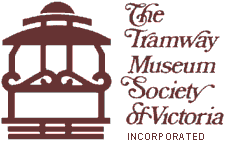
| About TMSV | Visitor information | Our collections |
Current projects | Feature articles | Join TMSV | Useful links | TMSV news |
 |
|||||||||
|
|||||||||
| > Index of articles > Previous article > Next article > Beginnings > Seven plus one > Roaring Twenties > The Great Depression > The War Years > Post-war doldrums > The Risson era > Descent into the red > Assessment of leadership > Debt-driven survival > Legacy of the M&MTB > Financial summary > Bibliography |
Fares please! An economic history of the Melbourne & Metropolitan Tramways BoardPrefaceMelbourne is famous for its street tramways, which rank amongst the largest such systems in the world. From 1919 to 1983 this network was developed and operated by a remarkable organisation, the Melbourne & Metropolitan Tramways Board (M&MTB). This statutory State government organisation ensured the survival of Melbourne’s trams through difficult times, particularly the 1950s and 1960s, when many cities across the world were abandoning trams for buses and private motorcars.
Looking south down St Kilda Road from the corner of Flinders and Swanston Streets, 1947. Note Flinders Street Station on the right and the trams waiting at the stops outside the station compared with the level of vehicular traffic. Photograph Public Records Office of Victoria. Much has been written on the Melbourne tramway system, mainly for the tram enthusiast, but little has been published on its economic history, or that of the M&MTB. Without an understanding of the financial situation of the M&MTB, the rationale for its survival cannot be understood, as an unqualified preference for trams over other forms of transport would never justify their retention. This was clearly stated in 1955 by the third Chairman of the M&MTB, Robert Risson [1]: There is, or has been, a disposition to refer to some transport authorities as tram-minded, bus-minded, or as the case may be, meaning unreasonably prejudiced in favour of one type of vehicle. That, of course, is foolish. No operator founds his business on prejudice — even, let me assure you, a monopolist operator. Decisions are made on hard facts — economic facts… This was from a man credited by his detractors as having an extreme commitment to trams over buses. Therefore, the intent of this paper is to paint the financial background of the M&MTB, which gives fresh insight into its history, and why it managed to survive when almost all other Australian tramways were closed. The title of this paper is taken from the call of tram conductors as they passed through a crowded tram: ‘Fares please!’ AcknowledgementsThe following people have provided extensive assistance to the author during the writing of this paper: Rod Atkins, Graham Jordan and Keith Kings. Special thanks are due to the staff of the State Library of Victoria, who have been endlessly helpful, courteous and supportive in obtaining sources for this paper. Finally, this paper would not have been possible without the encouragement of my editor and sister, Noelle Jones. Her advice and good sense have been invaluable. AuthorRussell Jones is a senior IT executive based in Melbourne. His passion for Melbourne’s trams dates from an early age, reflected in his involvement with the Tramway Museum Society of Victoria (TMSV) over many years. He sat on its Board of Management from 1989 to 2002, was General Manager from 1994 to 2002, and has been Chairman of the TMSV since 2004. Russell was educated at Melbourne High School, the University of Melbourne and Chisholm Institute of Technology. Note on conversionsMonetary values in this paper have not been adjusted for inflation. All amounts in the text of this paper prior to 14 February 1966 (the date of conversion to decimal currency) are quoted in Australian sterling, and monetary values after this date being expressed in Australian dollars. For the purposes of comparison and analysis of financial data, all amounts in graphs and tables are specified in Australian dollars, unless otherwise noted. The conversion rate between sterling and decimal currency is £1 = $2. For those unfamiliar with sterling, there are 12 pence in a shilling and 20 shillings in a pound. One shilling is equivalent to 10 cents ($0.10). All distances have been quoted in kilometres, in order to enable easy comparison of data pre- and post-conversion to the metric system of measurement. Footnote[1] Extract from a speech given to the Victorian Branch of the Institute of Transport (Australian Section), reported in the August 1955 Journal of the Institute.
|
![]() Last
updated 15
December 2006.
Last
updated 15
December 2006.
![]() Content
copyright © Russell
Jones 2001-6. Reproduced with permission.
Content
copyright © Russell
Jones 2001-6. Reproduced with permission.